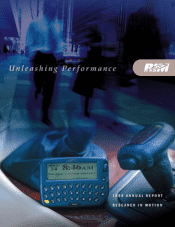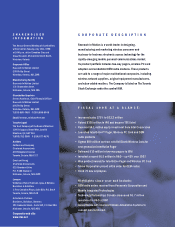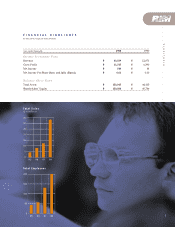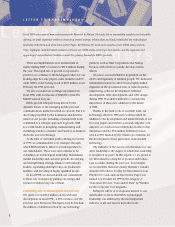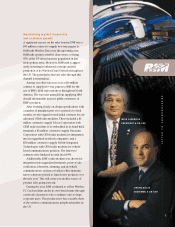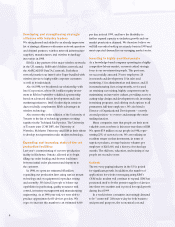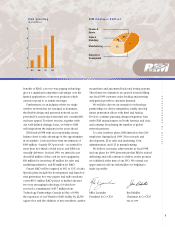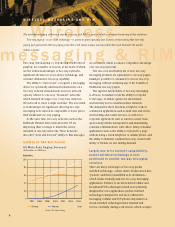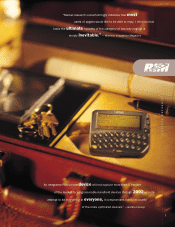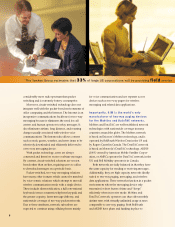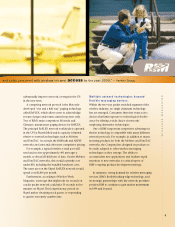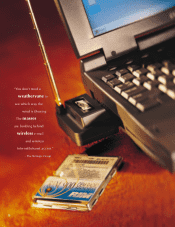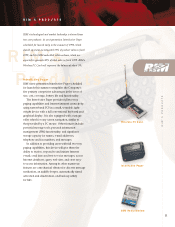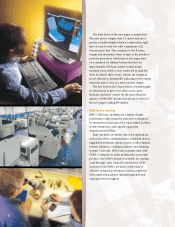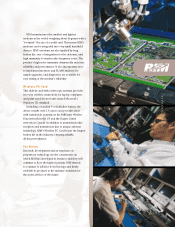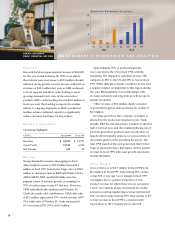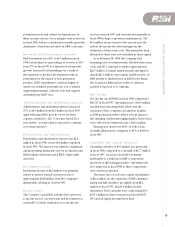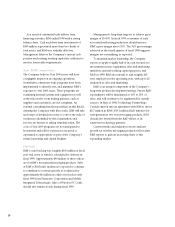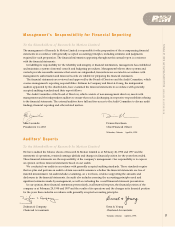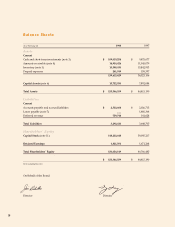Blackberry 1998 Annual Report Download - page 10
Download and view the complete annual report
Please find page 10 of the 1998 Blackberry annual report below. You can navigate through the pages in the report by either clicking on the pages listed below, or by using the keyword search tool below to find specific information within the annual report.
8
considerably more radio spectrum than packet
switching and is extremely battery consumptive.
Moreover, circuit-switched technology does not
integrate well with the packet-based environments of
office computing and the Internet. The Internet is an
inexpensive communications backbone for two-way
messaging because it eliminates the need for call
centres and human operators to relay messages. It
also eliminates airtime, long distance, and roaming
charges usually associated with wireless voice
communications. The Internet also allows content
such as stock quotes, weather, and news items to be
selectively downloaded and efficiently delivered to
a two-way messaging device.
With packet technology, users are always
connected and therefore receive real-time messages.
By contrast, circuit-switched solutions are session
based rather than on-line, requiring users to call in
to download messages on a periodic basis.
Packet-switched, two-way messaging solutions
have many other features which cannot be matched
by voice-centric solutions which attempt to meet all
wireless communication needs with a single device.
These include silent notification, a full conventional
keyboard (versus a numeric telephone keypad) and
the greater capacity, faster message delivery, and
nationwide coverage of two-way packet networks.
Due to these attributes, network subscribers are
expected to continue using cellular phones mainly
for voice communication and use separate access
devices such as two-way pagers for wireless
messaging and related data applications.
Importantly, RIM is the world’s only
manufacturer of two-way paging devices
for the Mobitex and DataTAC networks.
Mobitex and DataTAC are well-established network
technologies with nationwide coverage in many
countries around the globe. The Mobitex network
is based on Ericsson’s Mobitex technology, and is
operated by BellSouth Wireless Data in the US and
by Rogers Cantel in Canada. The DataTAC network
is based on Motorola’s DataTAC technology. ARDIS
(100%-owned by American Mobile Satellite Corpor-
ation, or AMSC) operates the DataTAC network in the
US, and Bell Mobility operates it in Canada.
Both networks are fully balanced in that they have
the same capacity for sending or receiving messages.
Additionally, they are high capacity networks ideally
suited to two-way paging, messaging, and wireless
data applications. These networks function in a packet
environment where the messaging device only
transmits for short bursts of time and “sleeps”
efficiently when in receive mode. Mobitex and
DataTAC network operators can thus offer monthly
airtime rates with virtually unlimited usage at rates
comparable to one-way paging. Both BellSouth
and ARDIS have plans and funding in place to
“The Yankee Group estimates that 33% of large US corporations will be providing field service

